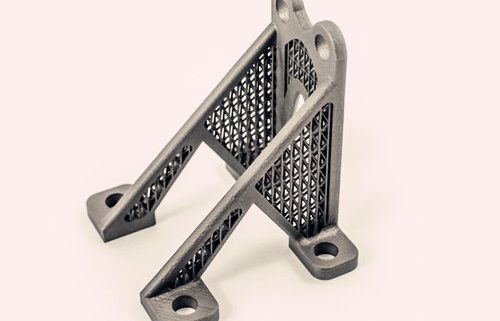Practical application of titanium alloy in 3D printing technology
Titanium, one of the widest-known alloys in Metal 3D Printing, combines excellent mechanical properties with very low specific weight. Pure titanium is available in grades one through four and all grades exhibit extreme corrosion resistance, ductility and weldability. Ti6Al4V is a titanium alloy that is 6 percent aluminum and 4 percent vanadium and it maintains its high tensile strength even at extreme temperatures. In 3D printing, they can be found a wide range of options in practical application.
1 Medical application
In industrial process, titanium’s biocompatibility makes the metal optional for medical applications, particularly when direct metal contact with tissue or bone is a necessity. Among the metal materials used for human hard tissue repair, Ti’s elastic modulus (about 80~110 GP) is the closest to human hard tissue, which can alleviate the mechanical inadaptability between metal implants and bone tissue. Therefore, titanium alloy has a wide application prospect in the medical field.
In the mid-20th century, the American and the United Kingdom applied pure Ti in organisms in the first time. Pure Ti has good corrosion resistance in physiological environment, mainly used for oral repair and replacement of less bearing parts, but its poor wear resistance has limited its application in bearing parts.
In 3D printing, the mechanical properties of titanium alloys Ti6Al4V(Gr5) and Ti6Al4V (Gr23) make them popular choices for clinical medicine. Compared with pure Ti, Ti6 Al4V alloy has high strength and good processability, was originally designed for aerospace applications, then is widely used in surgical repair materials such as the skull reparation, bone plate, etc. For a long time, the domestic and foreign research team focus mainly on Ti6Al4V, but the element Al and V may be harmful to human body, the new beta titanium alloy without Al and V such as TiZrNbSn, Ti24Nb4Zr7. 6 Sn etc were found.
Nowadays, 3D printing has been applied in orthopedic surgery and bone replacement. According to the data of patients, the prosthesis and auxiliary guide were printed out to help to find the incision position, perforation position, and drilling depth to simulate the surgery. The prosthesis manufactured by 3D printing technology can regenerate human tissue cells in the interspace, and the customized prosthesis is the same as the original shape of the patient’s body, and finally achieves the effect of close to the real bone after the surgery. In July 2015, thoracic surgery of TangDu hospital of China successfully performed a 3D printed titanium alloy sternum implant as a patient with the sternal tumor, becoming the world’s first 3D printed titanium alloy sternum implant. Dentistry is featured by personalized customization, rapid and lightweight miniaturization, which is especially suitable for adopting metal powder, especially titanium alloy powder 3D printing technology. Its products include dental crowns, dental Bridges, lateral orthodontic brackets, denture brackets, and dental screws.
2 Molds and tooling
Titanium alloys are used to produce a wide range of components and parts such as including blades, fasteners, rings, discs, hubs and vessels. Compared with the traditional forging and casting methods, the computer-controlled 3D printing converts CAD optimally into machine code or to rule out human errors, strictly controls the size of tooling part, especially for complex parts and ultra-complex curved parts. It greatly reduces the production time of the model and mold, improves the precision and quality of the model, and reduces the production time and cost.
3 Aerospace & Aeronautics
Producing aircraft is becoming more efficient and cost-effective than ever because it takes quality engineering to get an aircraft up in the sky. From lightweight components to certified series production, we know that aircraft components require an unconventional touch. The high cost, complex process and long delivery time of titanium alloy products manufactured by traditional forging and casting techniques limit their application, especially in the aerospace industry where customization is required.”Lightweight” and “high strength” have been the main objectives of aerospace equipment manufacturing and development, while the metal parts produced by 3D printing fully meet their requirements for equipment.
The titanium alloy used for gearboxes and connecting rod are Ti6Al4V and Ti6Al4VEL. 3D printing technology integrates conceptual design, technical verification and production and manufacturing, which can quickly realize small-scale product innovation and shorten development time. The total amount of material was reduced by 63%. The significant weight reduction leads to a smaller carbon print and less fuel usage for airplanes. The thermal stress was reduced due to less bulk material and larger support areas and complex shaped parts can be manufactured.



